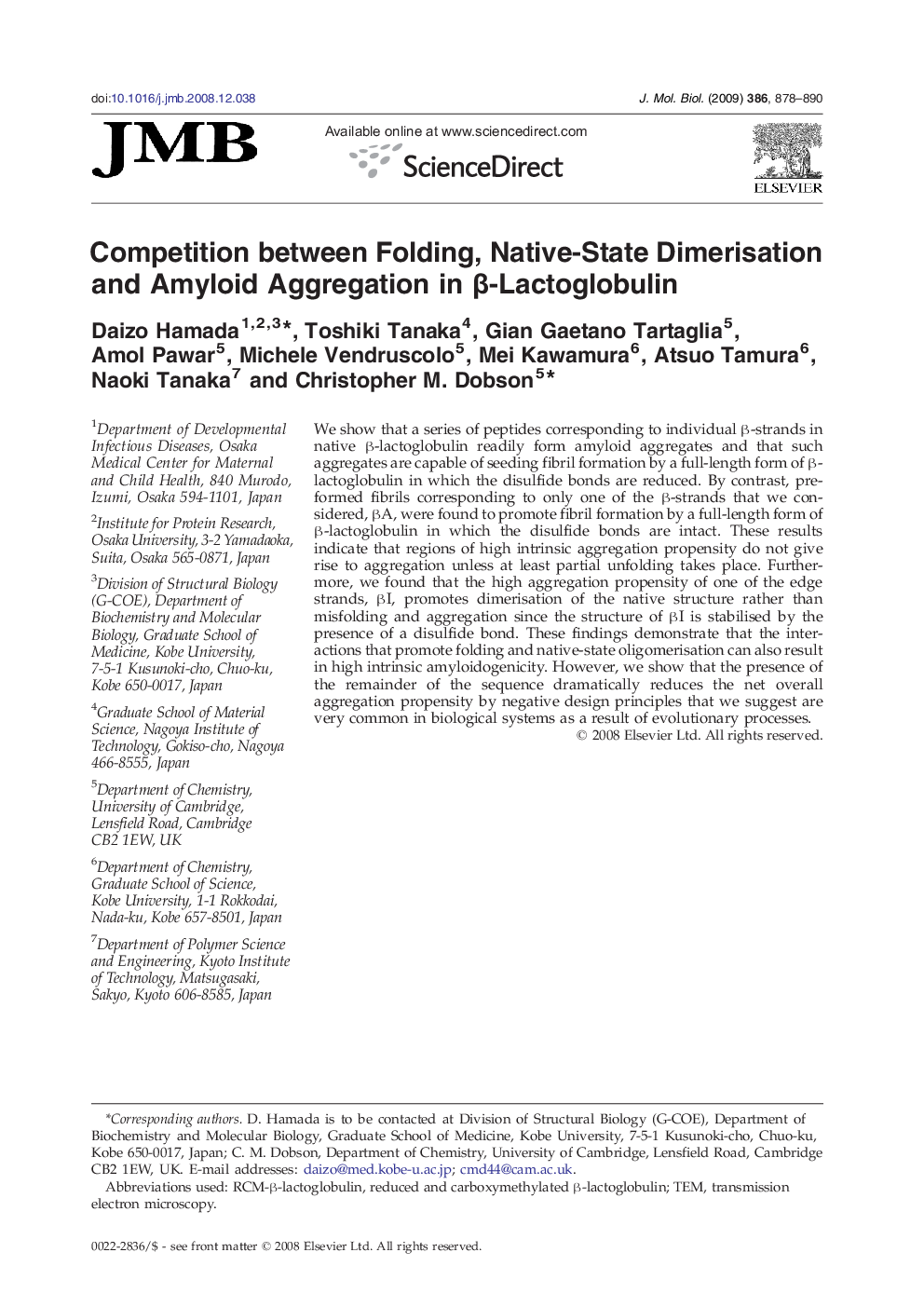| Article ID | Journal | Published Year | Pages | File Type |
|---|---|---|---|---|
| 2186913 | Journal of Molecular Biology | 2009 | 13 Pages |
We show that a series of peptides corresponding to individual β-strands in native β-lactoglobulin readily form amyloid aggregates and that such aggregates are capable of seeding fibril formation by a full-length form of β-lactoglobulin in which the disulfide bonds are reduced. By contrast, preformed fibrils corresponding to only one of the β-strands that we considered, βA, were found to promote fibril formation by a full-length form of β-lactoglobulin in which the disulfide bonds are intact. These results indicate that regions of high intrinsic aggregation propensity do not give rise to aggregation unless at least partial unfolding takes place. Furthermore, we found that the high aggregation propensity of one of the edge strands, βI, promotes dimerisation of the native structure rather than misfolding and aggregation since the structure of βI is stabilised by the presence of a disulfide bond. These findings demonstrate that the interactions that promote folding and native-state oligomerisation can also result in high intrinsic amyloidogenicity. However, we show that the presence of the remainder of the sequence dramatically reduces the net overall aggregation propensity by negative design principles that we suggest are very common in biological systems as a result of evolutionary processes.
